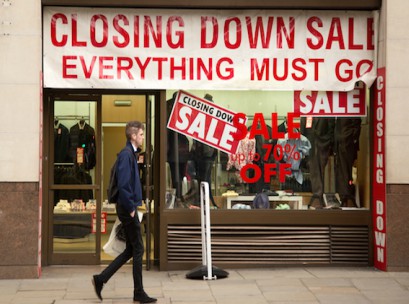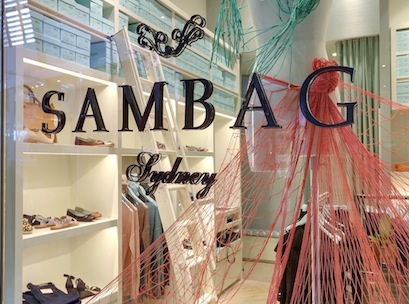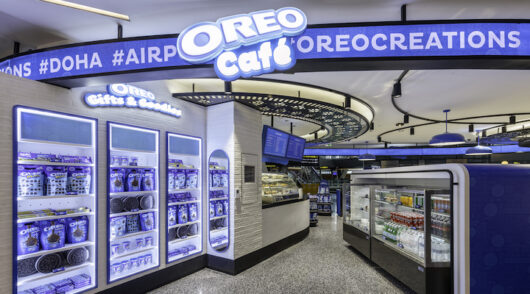 Store closures have become commonplace in recent years and, this year, about 1.3 per cent of the number of consumer goods retailers in the country are expected to close, bringing the number down from 76,490 to 75,503.
Store closures have become commonplace in recent years and, this year, about 1.3 per cent of the number of consumer goods retailers in the country are expected to close, bringing the number down from 76,490 to 75,503.
According to Kim Do, senior industry analyst at IBISWorld, the last five years has seen the number of consumer goods retailers, both foreign and local, decrease by an annualised 1.5 per cent and this includes the anticipated decline of 1.3 per cent over the current year.
The most common refrain of most retailers, consumers and analysts is that the store closures are the result of a profound shift in consumption to online, naming Amazon or Alibaba as the leading culprit.
But, according to Do, there are a number of reasons for the decline and it’s not only because of online competition. He said over the past five years, due to largely negative consumer sentiment, consumers have become more cautious of their expenditure, which ultimately led to an overall subdued retail environment over the period.
Yes, intense competition from foreign online shopping websites have further put pressure on Australian retailers, but the price of rent is also a part of it.
“Many retailers have put pressure on landlords to reduce rent, with some companies threatening to end their tenancy if prices are not dropped,” Do told Inside Retail.
Just last month, the founder and design director of apparel and accessories brand Sambag, which became one of the latest casualty of discretionary retail conditions, said they are shutting down their stores after 22 years of trading and blamed “greedy” landlords, competitive retail conditions and fast-changing shopping habits for the demise of the business.
But despite the number of stores shutting down and retailers blaming overpriced rents, retail landlords still have seemingly not adjusted their rents.
“There has been no evidence that retail landlords have reduced rent,” Do said. “Rather, a report by Colliers International suggests that average gross face rent has increased.”
John Schroder, formerly the head of commercial property of Stockland Group, has previously justified the rent increases, pointing to population growth and inflation, which he said balance out annual rent hikes.
So what about the vanishing shops?
 Do said retail landlords still have something up their sleeve.
Do said retail landlords still have something up their sleeve.
“Retail landlords are expected to have replaced vacancies with more lifestyle and entertainment services, such as grocery stores, health and beauty services, medical centres and eateries to diversify their tenancy mix and drive more foot traffic,” he said, which they certainly have in recent times.
A number of retail landlords have revamped their shopping centres, providing mall visitors with more dining, lifestyle and entertainment options.
Just last month, Stockland has unveiled its $414 million expansion of the Green Hills Shopping Centre near Maitland in NSW. The Green Hills’ redevelopment, the largest retail redevelopment slated to be completed in Australia this year, has doubled the size of the existing mall to around 74,000 square metres boasting of new fashion retailers, new dining, services, entertainment and a beauty oasis to attract more visitors.
“Real estate developers and shopping centre operators are expected to review and innovate their business model to broaden their value proposition for consumers in the face of the increasing popularity of online shopping,” Do said.
“This includes diversifying tenancy mixes to include a greater range of lifestyle and entertainment services, such as health and beauty services, medical centres, dine-in restaurants, cinemas and bowling alleys.”
Do added that temporary novelties such as concerts, galleries, pop-up shops, showrooms and concept stores are expected to become more common.
Some real estate developers have found relief in value-added elements and services that provide consumers with a range of experiences that cannot be satisfied online and create a community hub for individuals.
“Many retailers have also adopted in-store shopping experience initiatives to drive foot traffic,” she said.
“For example, Louis Vuitton held a Time Capsule Exhibition at Chadstone Shopping Centre, which exhibited a collection of objects and documents from the Louis Vuitton archives dating back to 1854.”
Landlords may have found a solution to the rising vacancies, but retailers have not. Some only have the one solution, slash their retail footprint. Some, to shut up shop.
The retail culture where a company is lauded for having a more robust store count is no longer the case. With more and more retailers increasingly investing in multichannel platforms, this had required others to review their store footprint and ensure they are operating at an optimal cost structure.
“Negative consumer sentiment over the past five years and a growing trend towards e-commerce has caused traditional retailers to struggle, while online retailers have flourished,” Do said.
“As a result, retailers are expected to increasingly operate one or two flagship stores to complement their online operations.”
This means, using these stores as a concept store or showroom, to allow consumers to interact with the brand and experience products while expecting the majority of sales to be made online.





